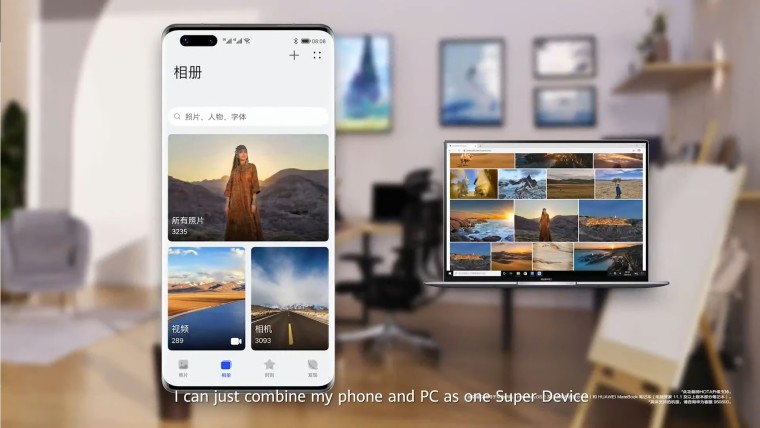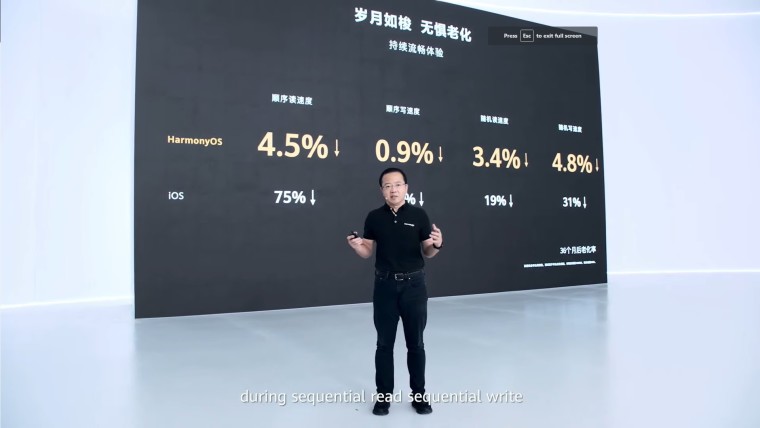
During its product launch event today, Huawei introduced the latest version of HarmonyOS, its new operating system that will attempt to unify the ecosystem of smart devices. HarmonyOS will run on all kinds of devices, including smartphones, wearables, smart TVs, and more. In fact, Huawei says HarmonyOS can run on devices with as little as 128KB of RAM, so almost any smart device may be able to run on the platform.
During the presentation, Huawei emphasized the connectivity between devices enabled by HarmonyOS, saying that all kinds of devices come together to form a "super device". For example, you may able to use a phone or a smartwatch to control a camera or a drone, or you can transfer a video call from your phone to a Huawei Vision TV. Music playback can also be easily transferred from one device to another, and so on.

Huawei also showcased a connection with PCs, despite them running Windows. The company created a HarmonyOS plug-in that's meant to enable deeper connectivity between devices, so instead of sending a file from your phone to the PC using a specific app, you can easily navigate your phone's files on your PC with a file explorer.
It goes beyond the typical smart devices you might be thinking of, though. HarmonyOS can run on things like smart ovens and fridges, and the connectivity between devices remains useful there. You can check the temperature of your fridge using your phone by tapping it against the fridge, or set a timer for an oven by doing the same thing. It's all about connectivity and making cross-device features native to the operating system.

HarmonyOS aims to be a truly cross-device operating system, so you can also do things like transferring tasks from the task manager on a phone to a connected tablet and continue where you left off.
There are also Service Widgets, which make a variety of services available natively as part of the ecosystem, without having to install any apps. You can tap a phone or watch on public transit terminal to buy a ticket, for example.
Outside of features, Huawei also says that HarmonyOS is faster than the Android-based EMUI and other competing platforms. Huawei implemented a feature that diminishes the performance impact when your phone's storage is almost full, making reads and writes faster.

Huawei also says it's using something called DGraphicEngine, which aims to improve the render performance of smartphones. It uses smart scheduling to distribute rendering tasks between the GPU and CPU to reduce overhead, and Huawei also claims it avoids repetitive rendering tasks, so it improves both performance and battery life while gaming, for example.
Additionally, HarmonyOS is designed to keep apps alive in the background without impacting performance. The company says that, whenever you switch between apps you'll always go back to where you were, instead of having to reload the app and find what you were doing before.
To address any privacy concerns, Huawei also says that it always keeps its users' privacy in mind and that it's been certified by multiple agencies for its efforts in protecting it. It also says that adding a device to become part of a "super device" requires specific confirmation on both ends to ensure no one intrudes your personal ecosystem.
HarmonyOS is coming soon, and it's actually going to be available on the Huawei Watch 3, which was also announced today, along with other devices.
_small.jpg)


















20 Comments - Add comment